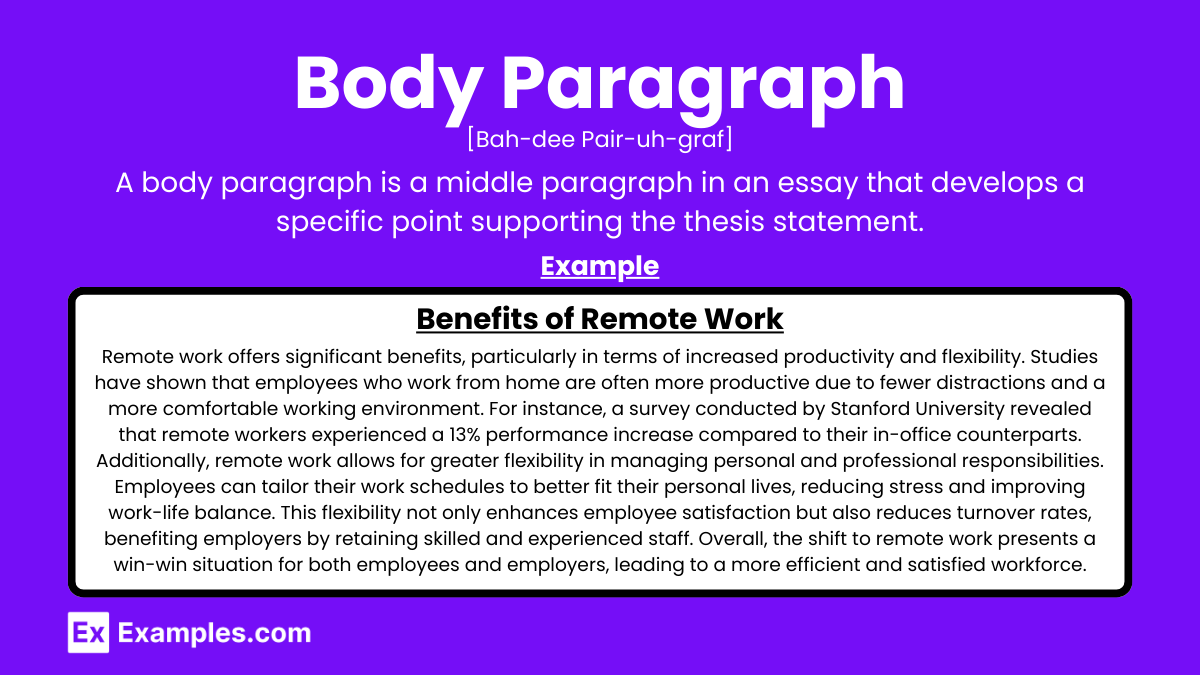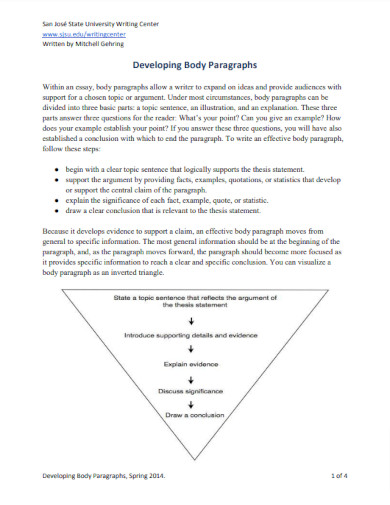

Whether you’re crafting an essay, report, or any other form of written communication, the body paragraphs serve as the heart of your composition. They provide the substantive content that supports your main ideas, arguments, or points. Understanding how to construct compelling body paragraphs is essential for conveying your message effectively and persuasively. In this guide, we’ll delve into the definition of body paragraphs, explore the step-by-step process to create them, address common FAQs, and highlight their significance in written communication.
A body paragraph is a section of an essay that develops a single main idea, supported by evidence, examples, and explanations. Each body paragraph typically starts with a topic sentence, followed by supporting details, and concludes with a sentence that reinforces the paragraph’s main point or transitions to the next idea. Effective body paragraphs help to structure and advance the essay’s argument.
Body paragraphs form the core of an essay, providing the details and evidence that support the thesis statement. A well-structured body paragraph enhances clarity, flow, and persuasiveness in writing. Here’s a guide to constructing effective body paragraphs:
The topic sentence introduces the main idea of the paragraph. It should be clear, concise, and directly related to the thesis statement.
Expand on the topic sentence by providing a brief explanation or elaboration. This helps to clarify the main idea and set up the evidence.
Present specific evidence to support the main idea. This can include quotes, statistics, examples, or research findings.
Analyze the evidence to show how it supports the topic sentence. Explain the significance and implications of the evidence.
Conclude the paragraph by linking back to the thesis or transitioning smoothly to the next paragraph. This helps maintain coherence and flow in the essay.

A body paragraph typically ranges from 5-8 sentences or 150-200 words, balancing detail and clarity without overwhelming the reader.
A topic sentence introduces the main idea of the paragraph and sets the tone for the content that follows.
Use transitional words and phrases, maintain a logical flow of ideas, and ensure all sentences relate to the main idea.
Use facts, statistics, quotes, examples, and anecdotes from credible sources to support your main idea effectively.
Analysis explains how your evidence supports your main idea, demonstrating critical thinking and deepening the reader’s understanding.
Use transitional sentences or phrases that connect the ideas of consecutive paragraphs, maintaining a smooth flow throughout your essay.
A closing sentence should summarize the paragraph’s main point and provide a transition to the next paragraph.
Yes, personal anecdotes can be powerful evidence, especially in narrative or persuasive essays, if they are relevant and support your point.
The number of body paragraphs depends on the essay’s length and complexity, but typically ranges from 3-5 for standard essays.
Avoid vague topic sentences, lack of evidence, poor transitions, and irrelevant details that do not support the main idea.